Desktop App Catalog
OSC OnDemand provides access to applications on compute nodes through the batch system, without the hassle or performance problems associated with X11 forwarding. To access one, please select an application under "Interactive HPC" from the "Desktop Apps" menu. For more information on each product, please go to its page provided below.
Accessing Parallel R tutorial
This document will guide you on how to launch Rstudio App and acess Parallel R workshop material through OSC onDemand.
Step 1: Log on to https://ondemand.osc.edu. Please see this guide on how to use OnDemand service.
Step 2: Launch Rstudio App
RStudio is an integrated development environment (IDE) for R. It includes a console, syntax-highlighting editor that supports direct code execution, as well as tools for plotting, history, debugging and workspace management.
Accessing through OnDemand
All the interactive apps can be found within the 'Interactive Apps' dropdown in our OnDemand web portal as shown in the image below:
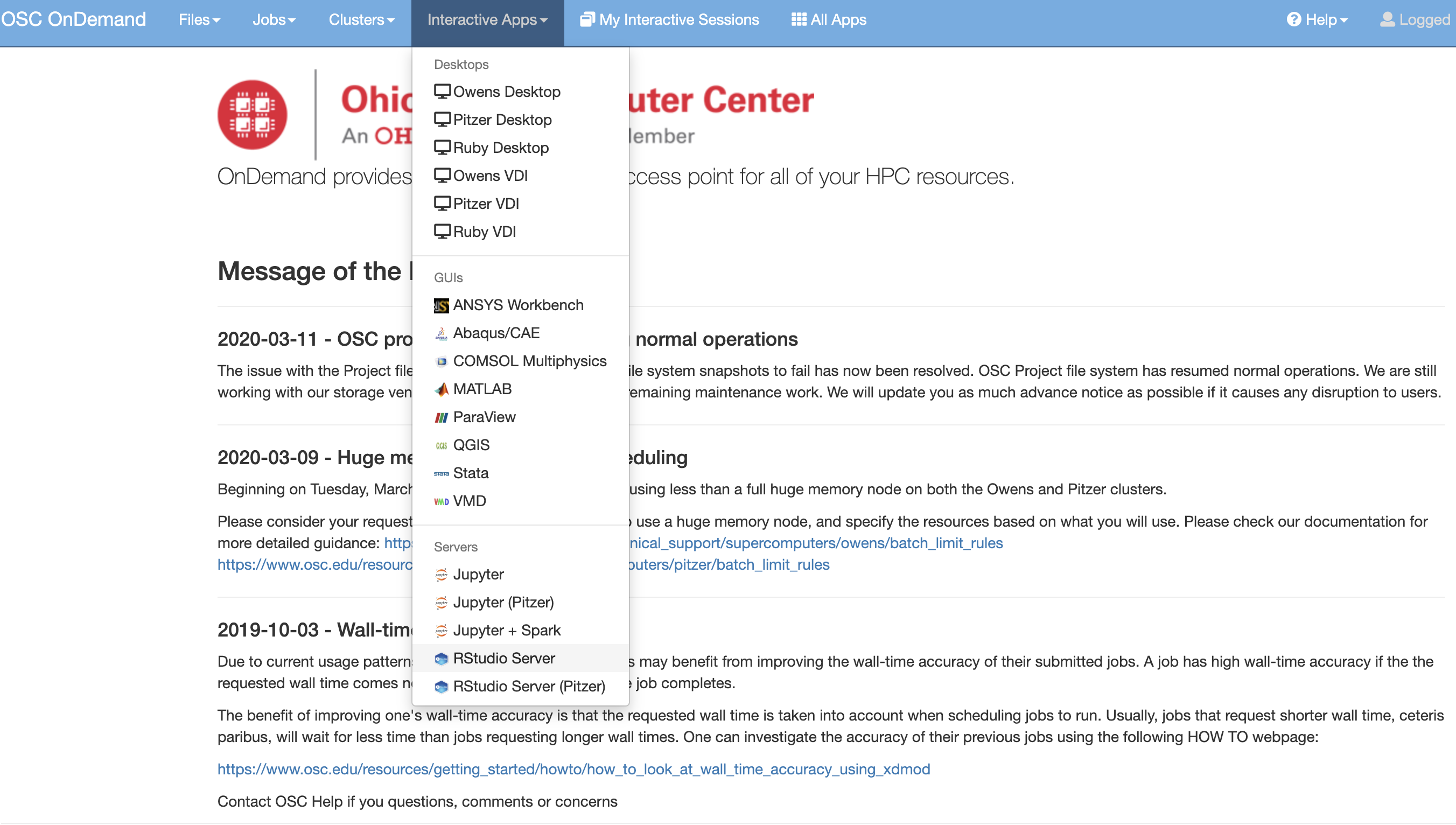
After selecting RStudio Server, you will arrive at this job submission page:
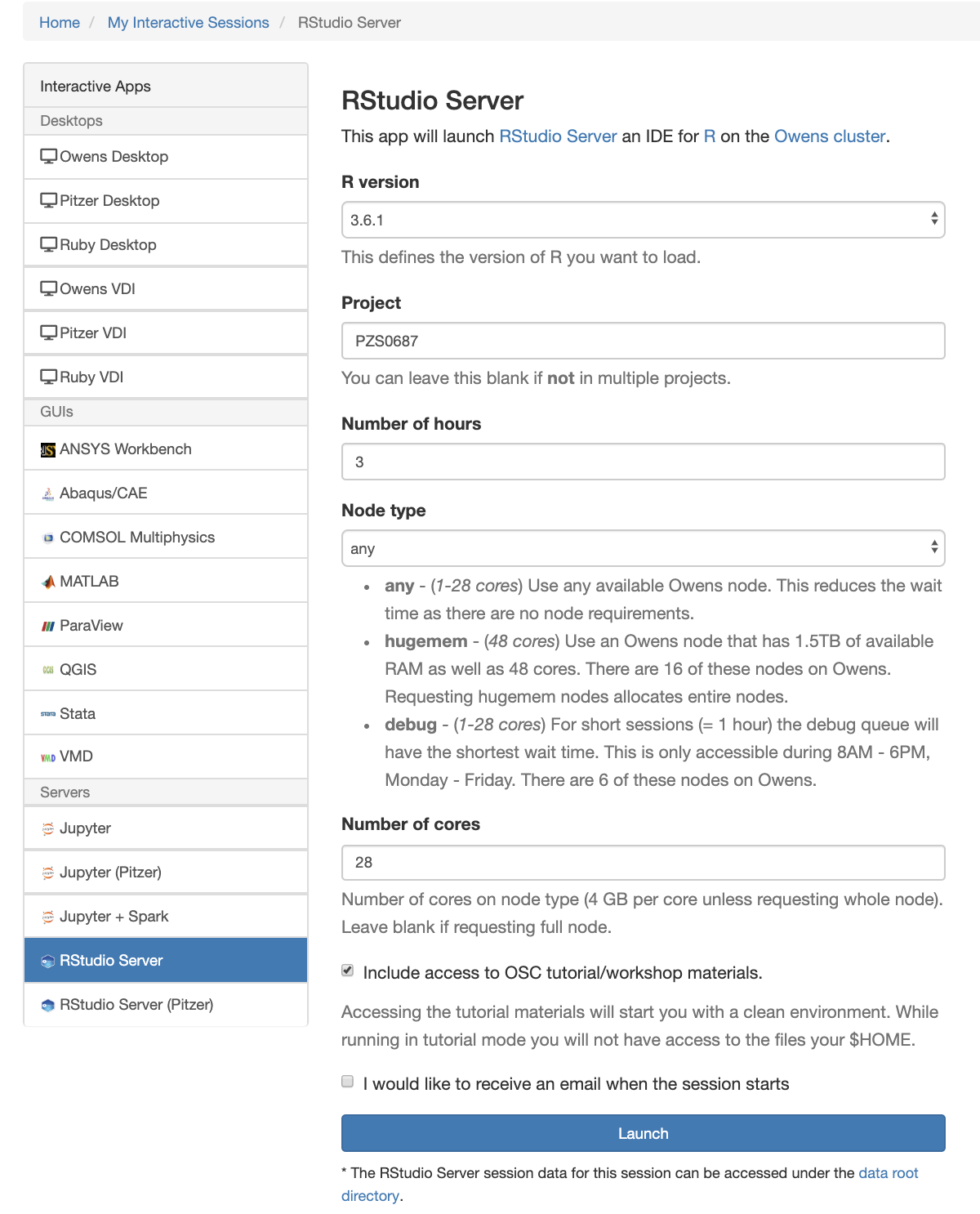
Here you can select the resources you would like your RStudio session to have using the menu on the lefthand side of the page. Please pick R/3.6.1 to access the tutorial material. Please provide your project ID as PZS0687 if you have registered for the workshop. If not, use your default project ID. Please contact oschelp@osc.edu if you dont have a project ID yet. Please make sure you check on the box that says Include access to OSC tutorial/workshop material. After you click "Launch", a new session will be queued. Once the session is active you page will look like the image below:
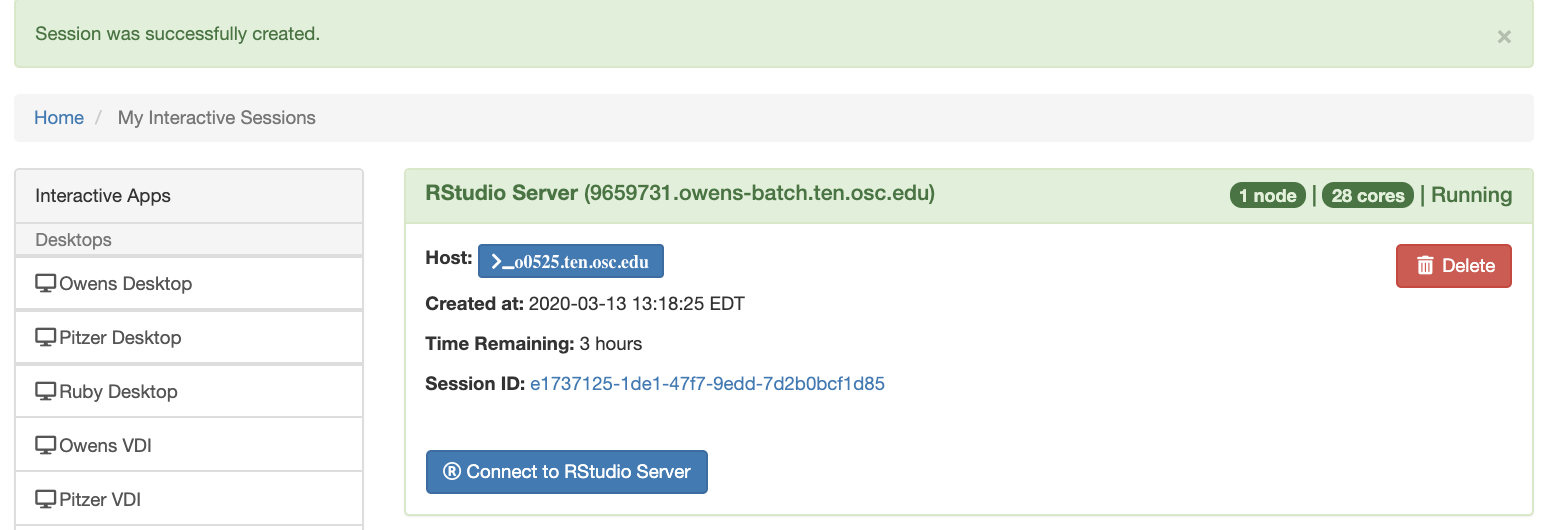
Click on "Connect to RStudio Server" to begin using RStudio.
Using RStudio
Once you have entered your session, you should see the RStudio page below:
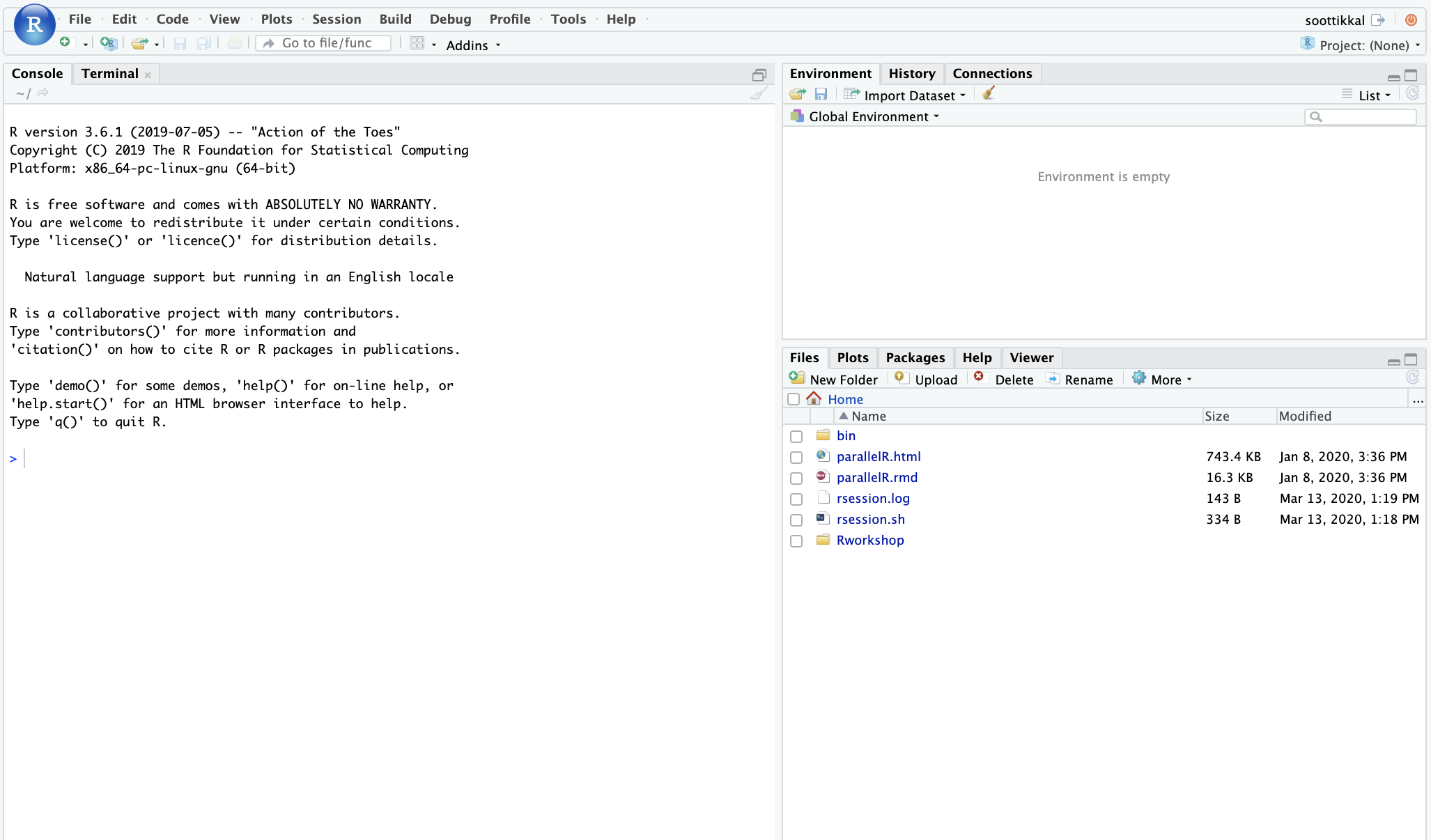
This is a typical RStudio interface that should be familiar to most users. Please note that Rstudio session for accessing the tutorial materials will start with a clean environment. While running in tutorial mode you will not have access to the files your $HOME.
- Top Left panel: code editer
- Bottom Left panel: The console where you can type commands and see the output.
- Top right panel:
- Environment tab: Shows all the active objects
- History tab: Shows a list of commands used so far.
- Bottom right panel:
- Files tab: Shows all the files and and folders in your home directory
- Plots tab: Shows all your graphs
- Packages tab: Lists a series of packages or add-ons needed to run certain processes
- Help tab: Can be used to find additional info
- Viewer tab: Used to view local web content
More info on RStudio and its use can be found on the RStudio official support page.
From the bottom right panel, please click on parallelR.rmd markdown file. This will open the training material in the code editer window as shown below.
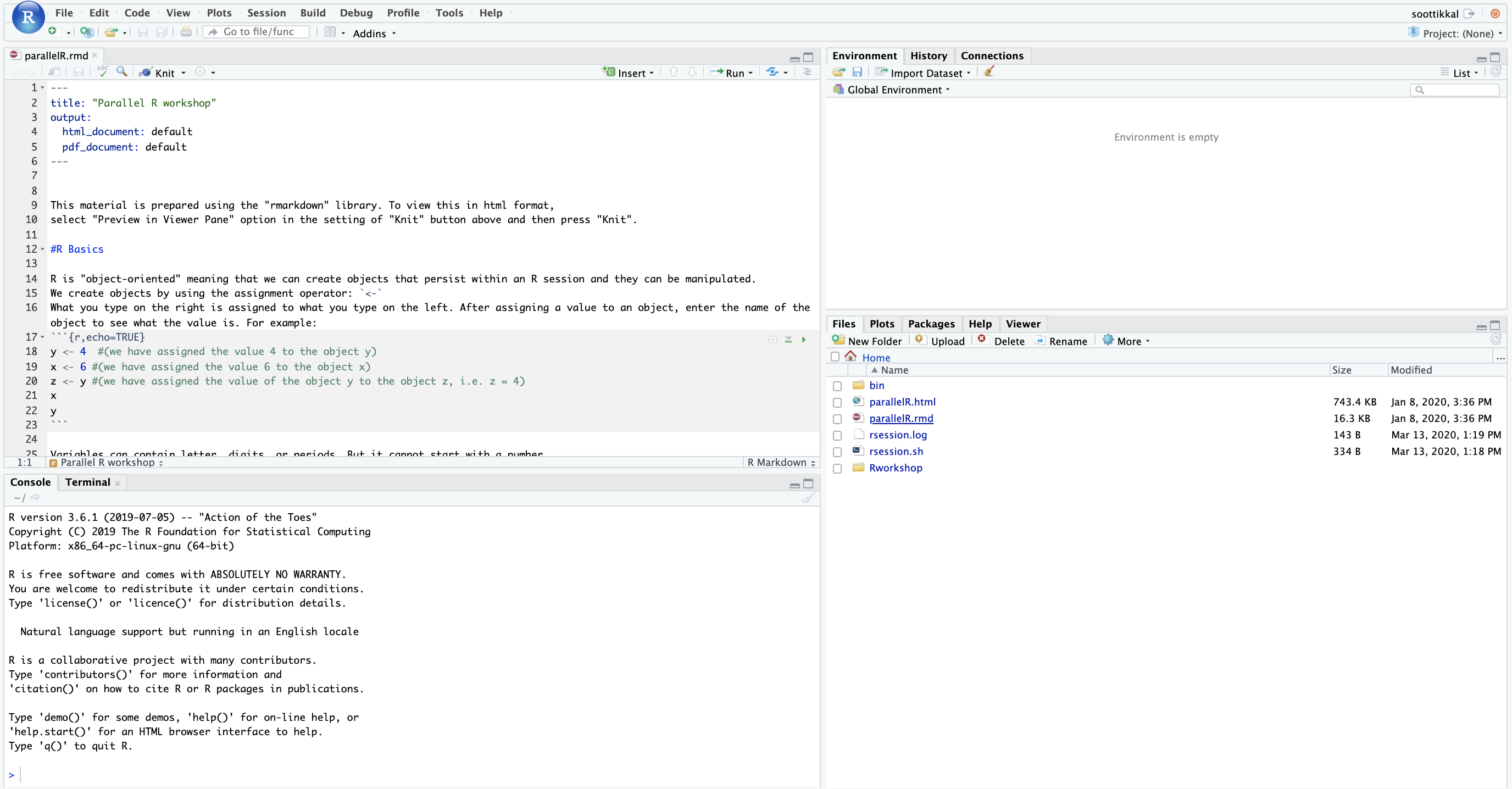
This ParallelR.rmd material is prepared using the “rmarkdown” library. To view this in html format, select “Preview in Viewer Pane” option in the setting of “Knit” button top of the code editer window and then press “Knit”.

This will open html version of the rmd document in the Veiwer pane of bottom right panel.
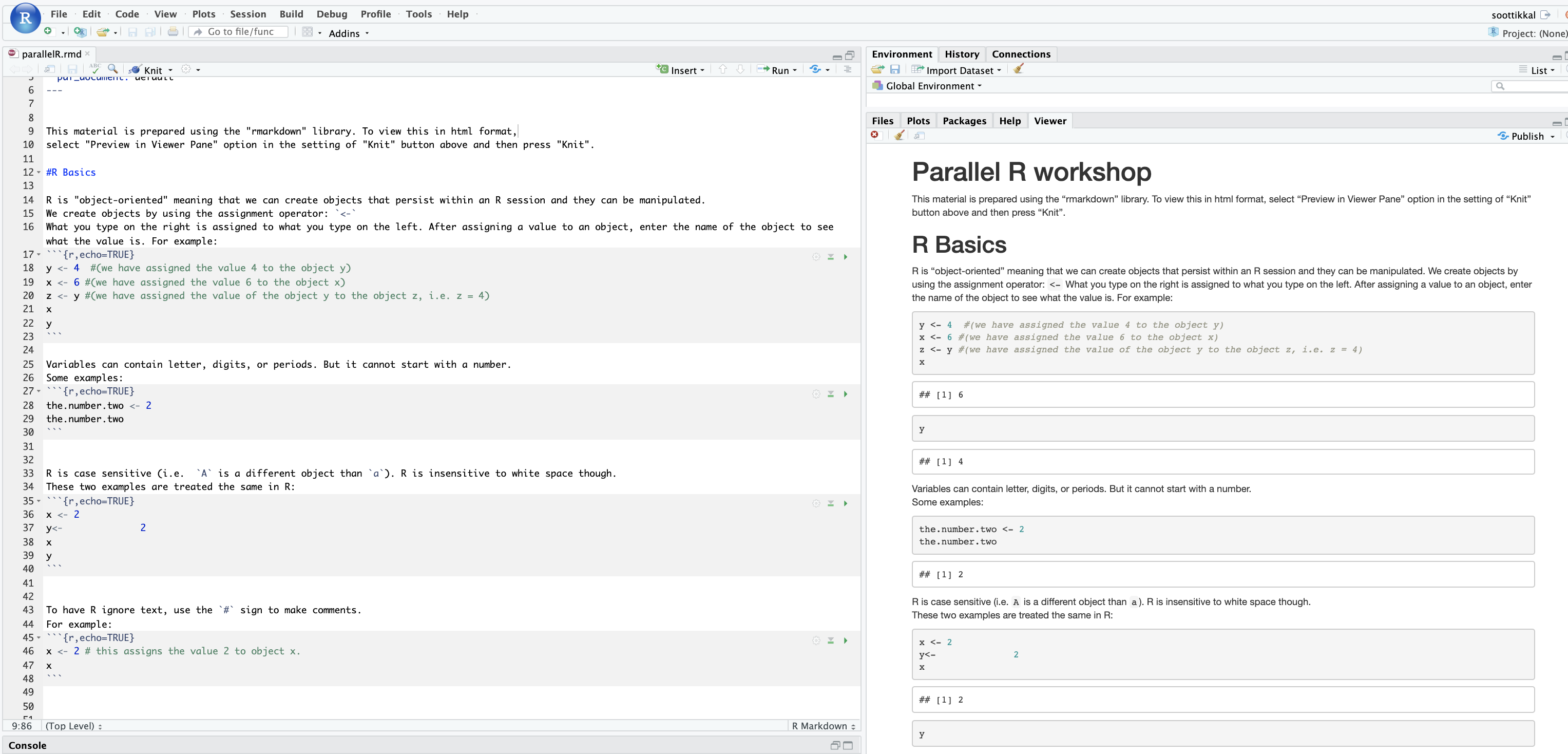
You can read though the html document in the Viewer Pane and execute codes in the Code editor. Press the Run/play button on the top right of each code block to run the code.
Please reachout to soottikkal@osc.edu if you have questions.
OnDemand Desktop App: MATLAB
MATLAB allows matrix manipulations, plotting of functions and data, implementation of algorithms, creation of user interfaces, and interfacing with programs written in other languages, including C, C++, C#, Java, Fortran and Python.
Accessing through OnDemand
All the desktop apps can be found within the 'Interactive Apps' dropdown in our OnDemand web portal as shown in the image below:
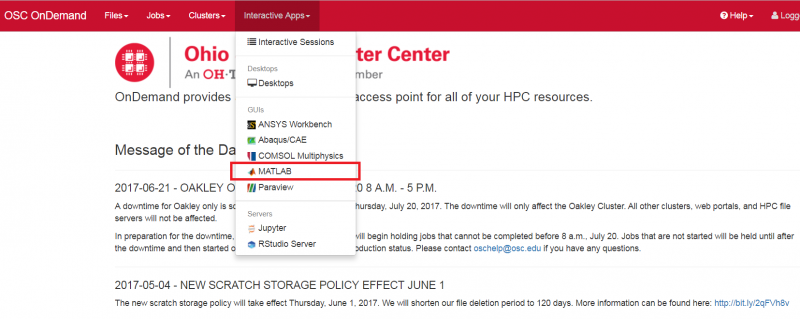
After selecting MATLAB, you will arrive at this page:
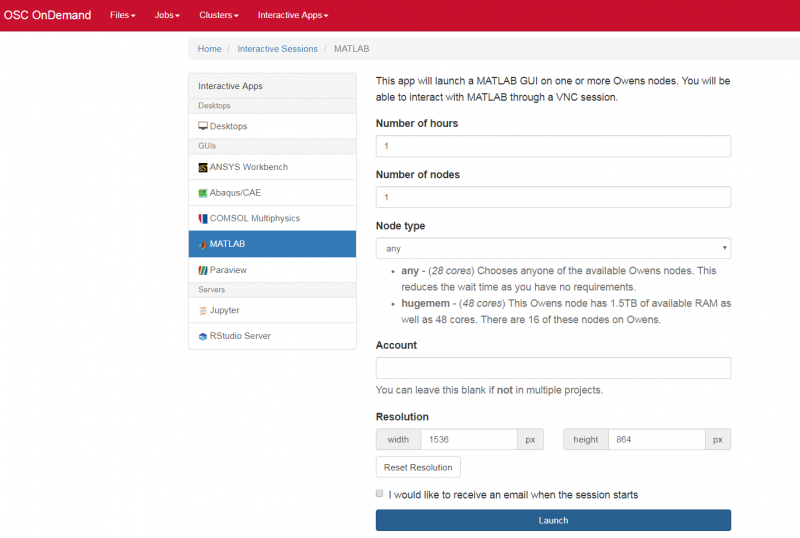
Here you can select the resources you would like your MATLAB session to have using the menu on the righthand side of the page. Additionally you can adjust the window size of the MATLAB session using the same menu. After you click "Launch", a new session will be queued. Once the session is active you page will look like the image below:

You can choose from "noVNC Connection", or "Native Instructions" to get the interface. If you use "noVNC", you can choose from "Launch noVNC in New Tab" to get your desktop and work accordingly, or "View Only (Share-able Link)" to get your desktop or share your desktop with colleagues in "View Only" mode. If you use "Native Instructions", see this page for more information on how to use OSC Connect.
Using MATLAB
Once you have entered your session, you should see a new tab. Allow MATLAB a moment to start up before your screen eventually looks like the image below:
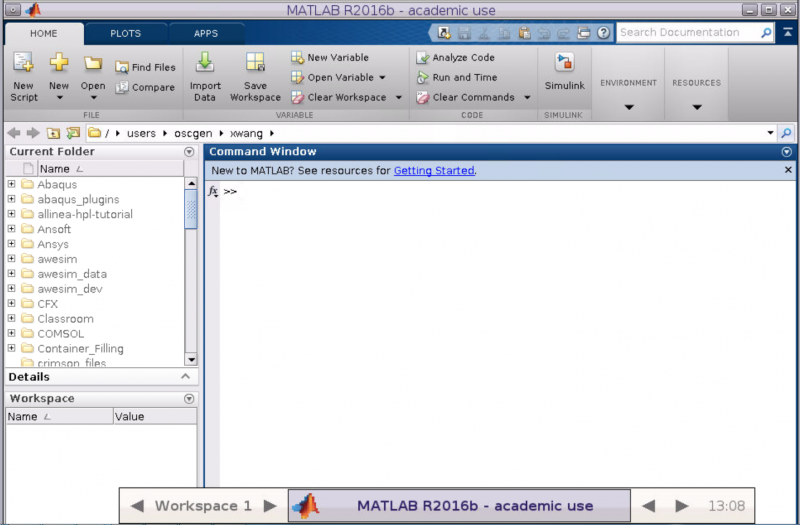
This is a typical MATLAB interface that should be familiar to most users.
The desktop includes these panels:
- Current Folder — Access your files.
- Command Window — Enter commands at the command line, indicated by the prompt (>>).
- Workspace — Explore data that you create or import from files.
More info on Matlab and its use can be found here.
Further Reading
OnDemand Desktop App: RStudio Server
RStudio is an integrated development environment (IDE) for R. It includes a console, syntax-highlighting editor that supports direct code execution, as well as tools for plotting, history, debugging and workspace management.
Accessing through OnDemand
All the desktop apps can be found within the 'Desktop Apps' dropdown in our OnDemand web portal as shown in the image below:

After selecting RStudio Server, you will arrive at this page:
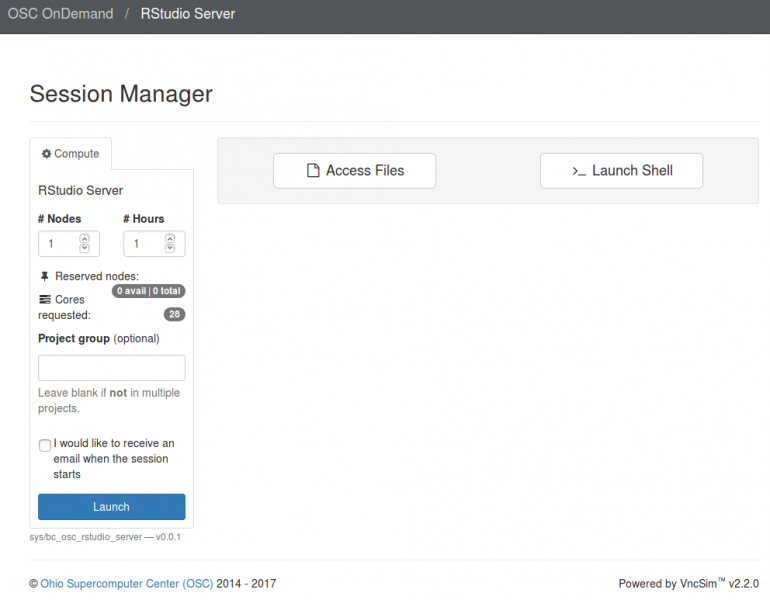
Here you can select the resources you would like your RStudio session to have using the menu on the lefthand side of the page. You can also access your files or launch the shell using the options in the center. After you click "Launch", a new session will be queued. Once the session is active you page will look like the image below:
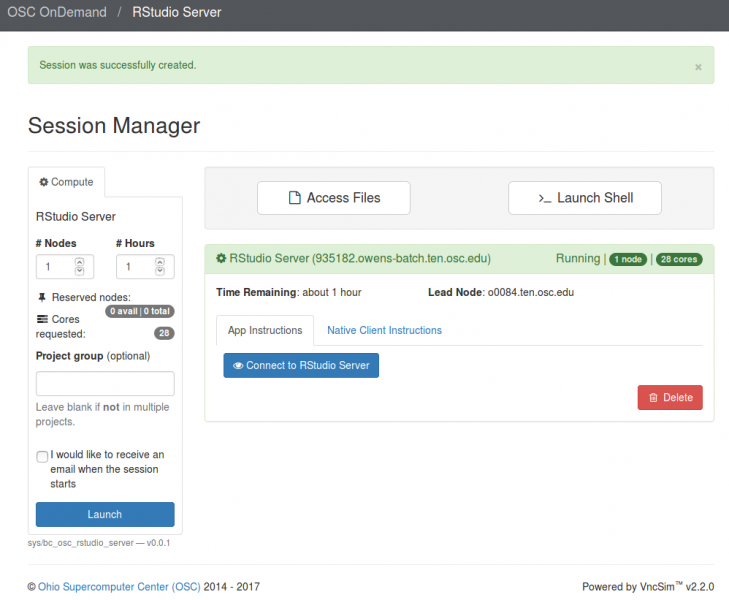
Click on "Connect to RStudio Server" to begin using RStudio.
Using RStudio
Once you have entered your session, you should see the RStudio page below:
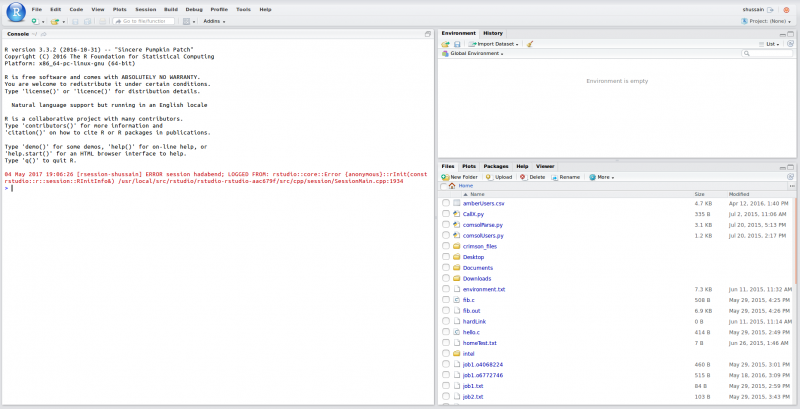
This is a typical RStudio interface that should be familiar to most users.
- Left panel: The console where you can type commands and see the output.
- Top right panel:
- Environment tab: Shows all the active objects
- History tab: Shows a list of commands used so far.
- Bottom right panel:
- Files tab: Shows all the files and and folders in your home directory
- Plots tab: Shows all your graphs
- Packages tab: Lists a series of packages or add-ons needed to run certain processes
- Help tab: Can be used to find additional info
- Viewer tab: Used to view local web content
More info on RStudio and its use can be found on the RStudio official support page.